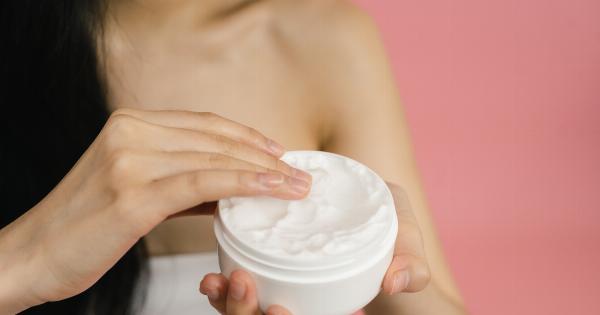White creams are widely popular in the cosmetics industry. They are used for various purposes from brightening skin tone to reducing the appearance of fine lines and wrinkles.
However, these creams may not always be safe and could pose serious health risks to the users. In this article, we will discuss the dangers of white creams and their potential side effects.
1. Skin irritation and allergies
White creams often contain a high percentage of active ingredients such as hydroquinone, retinol, and alpha-hydroxy acids, which can cause skin irritation, redness, and allergic reactions.
In some cases, these creams can also cause a burning sensation on the skin, leading to discomfort for the user.
2. Skin peeling and dryness
The use of white creams can lead to skin peeling and dryness. This happens because white creams contain ingredients that increase the rate of skin cell turnover, causing the skin to peel off.
The skin may also become dry and flaky, making it susceptible to infections and other skin problems.
3. Skin thinning and weakening
White creams with high concentrations of hydroquinone are known to cause skin thinning and weakening. Hydroquinone is a skin lightening agent that works by reducing the production of melanin, the pigment responsible for skin color.
However, overuse of hydroquinone can cause irreversible damage to the skin, leading to thinning and weakening of the skin layers.
4. Increased risk of skin cancer
White creams with retinol and alpha-hydroxy acids can increase the risk of skin cancer. These ingredients work by increasing the rate of skin cell turnover, which can lead to the development of abnormal skin cells.
With repeated use, these abnormal cells can turn into cancerous cells.
5. Hormonal imbalances
Some white creams contain steroids that can cause hormonal imbalances. Steroids work by suppressing the immune system and reducing inflammation, but prolonged use can disrupt the balance of hormones in the body.
This can lead to a range of problems such as acne, facial hair growth, and menstrual irregularities.
6. Increased risk of infection
The use of white creams can increase the risk of skin infections. This happens because the skin becomes thin and weak, making it more susceptible to bacterial and fungal infections.
In addition, some white creams may contain preservatives and other chemicals that can irritate the skin and increase the risk of infections.
7. Discoloration of the skin
White creams with hydroquinone can cause skin discoloration. Hydroquinone works by inhibiting the production of melanin, which can lead to uneven skin pigmentation.
Overuse of hydroquinone can cause the skin to become darker or lighter than the surrounding skin, causing a patchy appearance.
8. Negative impact on the environment
The production and use of white creams can have a negative impact on the environment.
Most white creams are made from synthetic ingredients that are harmful to the environment, and their production results in the generation of large amounts of waste and pollution. In addition, the use of white creams can result in the release of chemicals into the environment, further harming the ecosystem.
9. Regulatory concerns
White creams are subject to regulatory concerns due to the potential health risks they pose to consumers. Many regulators have banned or restricted the use of certain ingredients in white creams due to their harmful effects.
However, there are still many unregulated products available on the market that pose a risk to users.
10. Addiction
Finally, the use of white creams can lead to addiction. Many people become dependent on the creams to maintain their appearance or to improve their self-esteem.
This can lead to a cycle of dependence that can be difficult to break, ultimately leading to more serious health problems in the long run.
Conclusion
In conclusion, the use of white creams may come with various dangers and side effects, ranging from skin irritation and allergies to the risk of skin cancer and hormonal imbalances.
Therefore, it is important to be cautious when using these creams and to only use them as directed by a medical professional. Consumers should also be aware of the potential risks and ensure that they purchase safe and regulated products.





























